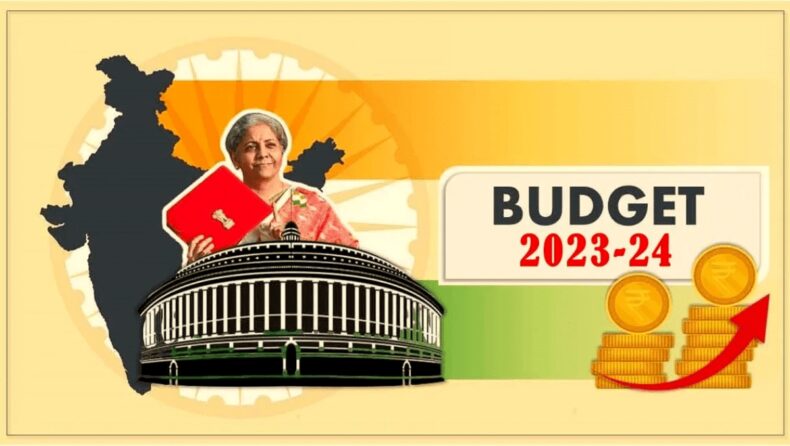Table of Contents
On February 1, 2024, Finance Minister Nirmala Sitharaman will present her fifth Budget 2024 Speech. Common taxpayers, including salaried employees, have very high expectations from the Finance Minister. All eyes will be on Finance Minister Nirmala Sitharaman as she prepares to present the last full Union Budget of the Narendra Modi-led National Democratic Alliance (NDA) government’s current term. For the first time since the previous two budget cycles, COVID-19 is not as hazardous as it was previously. FM Sitharaman is expected to strike a balance between fulfilling some of the taxpayers’ demands and laying the foundation for severe issues like job creation, GDP growth, fiscal Imbalance, and the push for capital expenditures in the infrastructure, industries, and other sectors.
Here are the 10 areas to keep a close eye on in the Budget 2024:
Capital Gains Tax:-
Gains from the sale of both movable and immovable capital assets are subject to capital gains tax. Long-term or short-term capital gains tax is imposed based on how long an asset is held. Different asset classes comprising mutual funds, equity investments, debt instruments, and real estate are taxed at various rates for capital gains. Additionally, depending on the holding duration and maturity, the capital gains tax may vary within the same asset class also.

Individual Income Tax:-
Individuals and the salaried class will also be closely monitoring any changes to the individual income tax slabs that are announced in the budget. This could be an opportunity to replace the two-system structure that has been in existence since 2020, with an efficient and simplified individual income tax bracket as well as rate structure.
Capital Expenditure:-
Finance minister Nirmala Sitharaman may announce significant expenditure plans to attract private investment. In the upcoming Budget 2024–24, the government is anticipated to keep up with its strategy to increase capital investment, paying close attention to State’s spending on capital assets. This is consistent with the last Budget, which saw a massive increase in the Center’s capex plans. The construction and development of roads and other infrastructure can enhance the economy and create jobs. The industry, which contributes around 8% of GDP and employs about 40 million people, is the greatest producer of direct and indirect jobs.

Fiscal Deficit:-
Markets and policymakers will be carefully following this figure. The government’s intention to comply with what it preaches about fiscal responsibility would be shown by Finance Minister Nirmala Sitharaman’s predicted continuation of the fiscal consolidation. The fiscal deficit for 2021–22 remained inflated at 6.9% of GDP as the pandemic persisted into 2022 and spending on welfare increased. The government plans to continue with fiscal consolidation to achieve a level of fiscal deficit lower than 4.5% of GDP by 2025–2026. The government anticipates the deficit to lessen to 6.4% of GDP.
Food Subsidy Bill:-
By incorporating the free foodgrain program under the National Food Security Act (NFSA) for 2024, the government chose to extend it as Covid relief under the Pradhan Mantri Gareeb Kalyan Ann Yojana (PMGKAY). The average annual food subsidy provided by the Center from 2015–16 to 2019–20 was Rs 1.1 lakh crore. As a result, even if the bill for the following year would still be about double that amount, the government won’t have to spend money on PMGKAY, which has a monthly expenditure of almost Rs 14,000 crore.

Fertilizer subsidy: –
Fertilizer subsidies are anticipated to be the other costly proposition. The 2021–22 budget would increase from Rs 79,500 crore to Rs 1.38 lakh crore due to an increased fertilizer subsidy that the government has already calculated, which will cost Rs 58,430 crore. The government will probably estimate a greater fertilizer subsidy this year due to the expectation of a substantial increase in net sowing area and high input and fertilizer costs globally.
Nominal GDP growth: –
The data released by the statistics ministry on January 6, estimates that India’s nominal GDP growth for FY23 will be 15.4%, compared to FY22’s rate of 19.5%. In 2022–2023, the real or inflation-adjusted GDP of India is anticipated to increase by 7%. The World Bank last month increased its GDP growth prediction for India for the fiscal year upward to 6.9% for 2022–2023, noting that the economy was demonstrating greater resilience to global shocks.
Section 80 (C): –
Under the well-known “Section 80C” program, the government might increase the tax breaks provided on money invested in a variety of savings instruments, including bank fixed deposits, insurance premiums, and mutual funds, from Rs 150,000 to Rs 200,000 annually. If implemented, the proposal might persuade people to invest their surplus funds in the banking and financial systems rather than hoard cash.
Asset Monetisation: –
The government’s ambitious plan for National asset Monetization Pipeline (NMP) may be correlated with the success and performance of the infrastructure ministries in terms of budgetary allocation. The government could miss the NMP target for this year. Transactions of Rs 33,100 crore have already been finalized in the current year. Transactions under the NMP of Rs 96,000 crore were completed in the previous fiscal year, exceeding the objective of Rs 88,000 crore. According to the NMP project, which was unveiled by Finance Minister Nirmala Sitharaman in August 2021, the government will monetize assets worth Rs 6,00,000 crore between 2021–2022 and 2024–2025.

Millets:-
As India gears up to lead the celebration of International Millet Year 2024 and encourage the cultivation and consumption of nutri-cereals, the Union Budget may propose a specific fund or a program for millets. Millets are regarded as “Smart Food” since they are convenient to grow, mostly organic, and have a high nutritional value. The International Year of Millets (IYM) 2024 initiative was proposed by the Indian government, chaired by Prime Minister Narendra Modi, and approved by the UN General Assembly (UNGA). The declaration has been essential for the Indian government’s leadership in IYM celebrations. IYM 2024 should develop into a “People’s Movement,” according to Modi, who also wants to make India the “Global Hub for Millets.”













